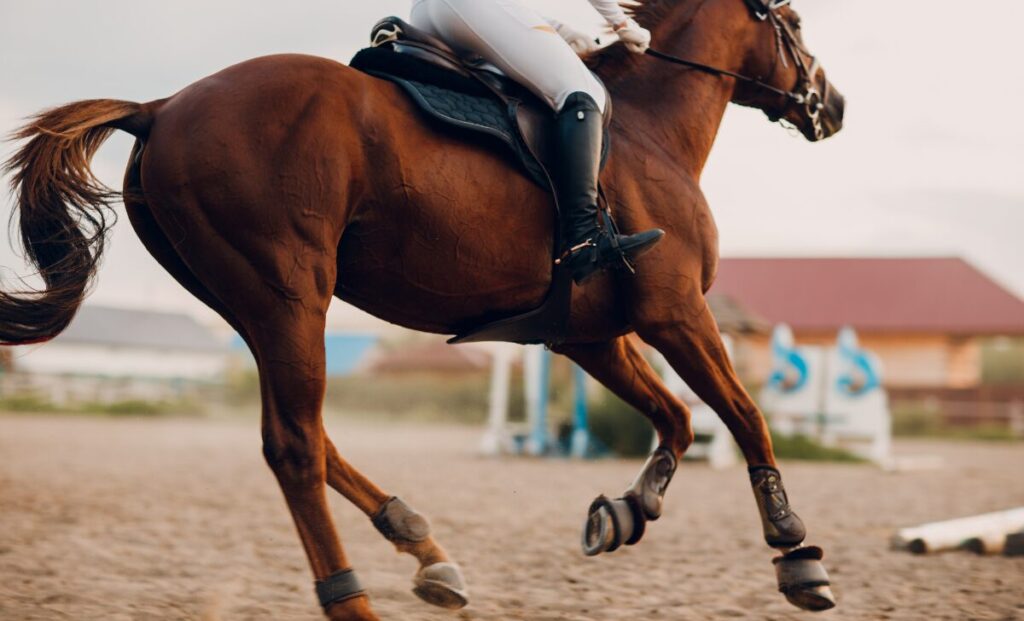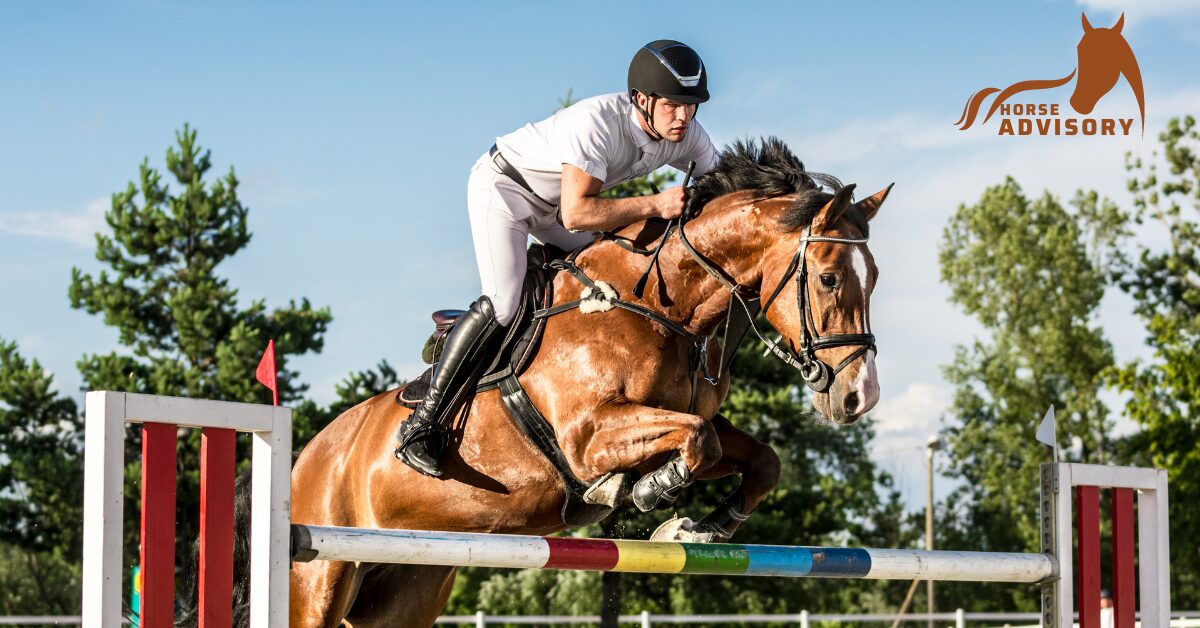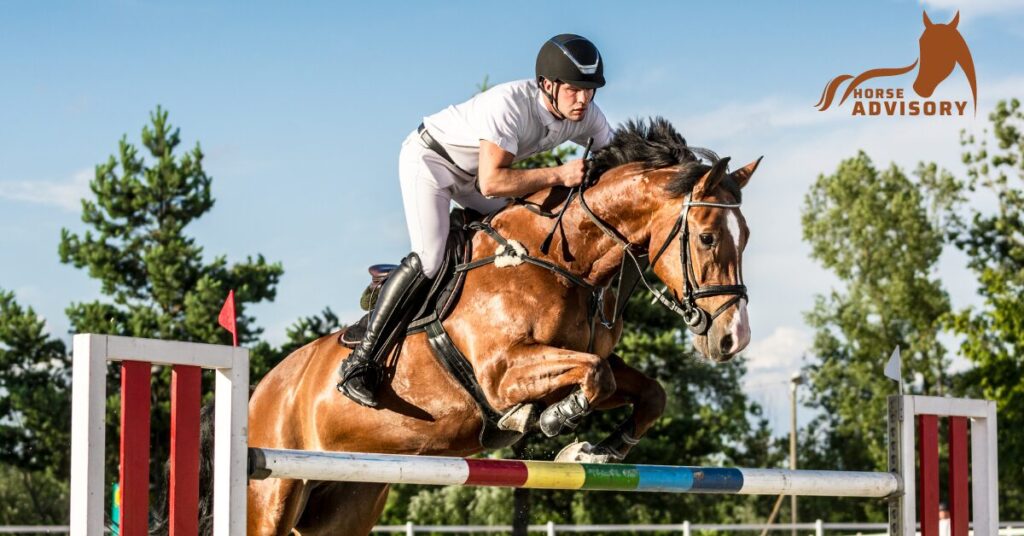Show jumping has long been intertwined with the significance of horse breeds, and among them, warmblood horses have risen to prominence in competitive show jumping due to their exceptional capabilities and temperament.
The History of Warmbloods
The history of warmblood horses is a captivating narrative that traces back to the meticulous selective breeding efforts aimed at cultivating agile, athletic, and versatile equines. This deliberate breeding work was carried out with the intention of producing a breed of horse that possessed not only physical prowess but also an amiable temperament, making them ideal partners for various equestrian disciplines.
The origins of warmblood horses can be found in the regions of Europe, where the terrain and agricultural practices necessitated the development of a robust yet docile equine companion. Through careful breeding selection, which often involved crossing hot-blooded and cold-blooded horses, breeders sought to create a new type of horse that combined the speed and athleticism of the hot-blooded breeds with the strength and resilience of the cold-blooded ones.
As these breeding efforts progressed over the centuries, a distinct type of horse began to emerge, characterized by its balanced attributes and adaptable nature. Warmbloods gradually gained recognition for their performance in a variety of equine activities, including agriculture, transportation, and later, sport.
The evolution of warmblood horses into a preferred breed for show jumping can be attributed to their remarkable adaptability and natural inclination towards athletic endeavors. Their ability to excel in the demanding discipline of show jumping, which requires precision, power, and agility, solidified their place in the equestrian world as prized competitors.
Throughout history, warmbloods have continued to captivate equestrians and enthusiasts alike with their remarkable journey from working horses to esteemed athletes. Their evolution from humble beginnings to becoming a symbol of grace, strength, and versatility in the realm of competitive show jumping is a testament to the enduring legacy of these exceptional equine companions.
Characteristics of Warmbloods
The physical attributes of warmbloods, including their sturdy build, powerful hindquarters, and graceful movement, make them exceptionally well-suited for the demands of show jumping.

Robust and Sturdy Build for Show Jumping
Warmbloods are revered for their robust and sturdy build, which serves as a cornerstone for their success in the demanding discipline of show jumping. Their well-proportioned bodies, characterized by a perfect blend of strength and elegance, provide a solid foundation for navigating complex courses with remarkable agility and grace. The combination of strong, well-defined musculature and a balanced physique enables them to tackle the rigorous demands of show jumping with finesse and confidence. This physical attribute not only enhances their competitive edge but also contributes to their overall resilience and endurance, essential qualities for excelling in the challenging arena of equestrian sport.
Powerhouse Hindquarters
The powerful hindquarters of warmbloods stand out as a defining feature instrumental to their prowess in show jumping. These robust hindquarters represent a wellspring of explosive energy and propulsive force, indispensable for launching over jumps with precision and strength. The inherent strength in this region of their anatomy significantly bolsters their capacity to execute the dynamic movements requisite for navigating intricate jumping sequences. The ability to harness and leverage the power from their hindquarters distinguishes warmbloods as formidable competitors, enabling them to propel themselves over obstacles with remarkable agility and control. This remarkable physical attribute underscores their suitability for the rigorous demands of show jumping, positioning them as prime contenders in the equestrian arena.
Graceful and Agile Movement
The elegant and fluid movement displayed by warmbloods sets them apart as exceptional athletes in the realm of show jumping. Their smooth, flowing gaits, characterized by an effortless blend of grace and athleticism, allow them to maneuver through challenging jumping sequences with poise and dexterity. The seamless coordination and rhythmic cadence exhibited by warmbloods during their performances captivate both judges and spectators, underscoring their innate ability to excel in the dynamic and visually captivating sport of show jumping. Their mastery of graceful movement not only showcases their athletic prowess but also highlights their capacity to navigate the complexities of show jumping courses with finesse, elevating them to the upper echelons of competitive excellence.
Amiable Temperament and Collaborative Nature
Beyond their physical attributes, warmbloods are celebrated for their amiable temperament, playing a pivotal role in their success in show jumping. Their cooperative nature and willingness to engage with riders foster a harmonious and productive partnership within the competitive arena, laying the groundwork for a strong and mutually beneficial relationship between horse and rider. This affable disposition, coupled with their receptiveness to training and guidance, positions warmbloods as valuable partners for riders, enhancing their adaptability and trainability for the rigorous demands of show jumping. Their amiable temperament further distinguishes them as reliable and affable competitors in the high-stakes environment of equestrian sport.
Collaborative Spirit and Eagerness to Perform
Warmbloods exhibit a remarkable willingness to collaborate closely with their riders, showcasing an innate understanding of cues and commands that underpin their cooperative spirit. Their eagerness to perform at their best and their receptiveness to the guidance of their riders establish a strong rapport, laying the foundation for successful and harmonious performances in the challenging environment of show jumping competitions. This willingness to work closely with riders not only amplifies their potential to thrive in the competitive arena but also underscores their exceptional adaptability and responsiveness, solidifying their reputation as esteemed and reliable partners for riders in the dynamic discipline of show jumping.
Breeding and Bloodlines
Selective breeding is a crucial factor in shaping the show jumping capabilities of warmbloods, with influential bloodlines making a significant impact on the sport. Through selective breeding, breeders aim to cultivate specific traits and characteristics that are advantageous for excelling in show jumping. This meticulous process involves the deliberate pairing of horses with desirable attributes to produce offspring with an optimal combination of athleticism, agility, and temperament.
The influence of bloodlines becomes evident as certain horses from the same breeding line or stallion exhibit resemblances and similarities in their performance and physical attributes. Understanding warmblood breeding involves recognizing the significance of bloodlines, registration, and approvals in producing high-caliber show jumping competitors. Breeders and enthusiasts alike emphasize the importance of pedigree analysis and the recognition of renowned bloodlines that have consistently produced top-tier show jumpers.
Warmblood breeding is characterized by a focus on developing horses with exceptional elasticity, balance of movement, and conformation, all of which are essential for success in show jumping. The Dutch Warmblood breed, for instance, is renowned for its versatility and adaptability, with variations in conformation reflecting the influence of different bloodlines and breeding goals. Ultimately, the meticulous curation of bloodlines and the emphasis on breeding healthy, high-performance sport horses underscore the integral role of selective breeding in shaping the show jumping prowess of warmbloods.
Training and Development
The training methods designed for warmbloods in competitive show jumping are meticulously crafted to refine their natural abilities while nurturing their innate talent. These methods not only focus on honing their technical skills but also emphasize the development of a strong partnership between rider and horse. Trainers and riders work in unison to foster a deep understanding, trust, and collaboration, laying the groundwork for exceptional performances in the demanding arena of show jumping.
The training process is tailored to capitalize on the inherent athleticism, agility, and cooperative nature of warmbloods. It encompasses a comprehensive approach that encompasses physical conditioning, technical skill development, and psychological preparedness. This holistic training regimen is essential for cultivating the resilience, agility, and power necessary for excelling in the dynamic and physically demanding sport of show jumping.
Emphasizing discipline and consistency, trainers and riders strive to cultivate a harmonious partnership with warmbloods, drawing upon their receptive nature and eagerness to perform. The training methods are designed to enhance the horse’s ability to navigate intricate jumping sequences with finesse and precision while fostering a collaborative spirit that is foundational to successful performances in the competitive show jumping arena.
Ultimately, the training and development of warmbloods in show jumping exemplify a meticulous and dedicated process, tailored to unlock their full potential as remarkable equine athletes. Through a combination of technical skill refinement, physical conditioning, and the nurturing of their innate abilities, trainers and riders elevate the capabilities of warmbloods, positioning them as formidable contenders in the exhilarating world of show jumping.
Warmbloods on the Global Stage
Notable warmbloods have made a significant impact on the international show jumping stage, achieving remarkable success and garnering acclaim for their exceptional performances. These equine athletes have not only secured individual victories but have also elevated the sport, serving as inspirations and capturing the imagination of future generations of riders and enthusiasts.
Some of the most famous and successful Dutch Warmbloods in show jumping include Royal Kaliber, Ferro, Udon, Authentic, and Breitling LS, all of which have left an indelible mark on the sport. Their achievements exemplify the prowess and versatility of Dutch Warmbloods in excelling in both jumping and dressage disciplines, contributing to their recognition as top-tier performers in the global equestrian community.
The influence of warmbloods, such as the Dutch Warmblood breed, extends beyond their individual accomplishments, shaping the landscape of competitive show jumping and leaving a lasting legacy that continues to inspire and motivate riders and breeders worldwide. Their presence on the global stage underscores the significance of the warmblood breed in redefining excellence in equestrian sports and reinforcing their role as formidable contenders in the dynamic world of show jumping.
Challenges and Controversies
Warmbloods have garnered widespread acclaim for their exceptional performance and agility in the competitive arena of show jumping. However, alongside their celebrated achievements, criticisms and controversies have emerged, prompting discussions within the equestrian community. Addressing these concerns is crucial for gaining a balanced perspective on the role of warmbloods in competitive show jumping.
One notable area of contention revolves around the potential impact of lameness on the performance of warmbloods in show jumping. Studies have highlighted the increased risk of back problems among warmbloods, raising concerns about how such issues may affect their agility and overall performance in the arena.
Unique Health Challenges
Another area of discussion centers on the unique health challenges that warmbloods may face. These challenges include the slower maturation rate of warmbloods compared to other horse breeds, which necessitates specific feeding and care considerations, presenting distinct challenges for breeders and owners.
The genetic diversity and population structure of warmblood horses used in show jumping have been subjects of analysis. Understanding the genetic makeup of these athletes is essential for addressing potential implications for their performance and welfare.
Behavioral and Physical Considerations
Instances of behavioral issues and physical challenges among warmbloods have also been observed, prompting questions about their suitability for show jumping and the overall well-being of these equine athletes.
While warmbloods have undoubtedly made a significant impact in the world of show jumping, it is imperative to recognize and address the multifaceted challenges and controversies surrounding their participation in the sport. By acknowledging and engaging with these concerns, the equestrian community can work towards fostering a more comprehensive understanding of the complexities associated with warmbloods in competitive show jumping.
The Future of Warmbloods in Show Jumping
As the landscape of competitive show jumping continues to evolve, warmbloods are expected to maintain their influential presence and play a pivotal role in shaping the future of the sport. Several factors contribute to the predictions for their continued influence, including advancements in breeding techniques, innovative training methodologies, and the evolving dynamics of show jumping competitions.
The future of warmbloods in show jumping is closely intertwined with advancements in breeding techniques. Breeders are likely to continue leveraging cutting-edge genetic selection methods to produce warmbloods with enhanced athleticism, agility, and adaptability, thereby further solidifying their position as top contenders in the sport.
Innovative training methodologies are anticipated to play a crucial role in maximizing the potential of warmbloods in show jumping. Advancements in equine training science and technology are expected to result in more tailored and effective training regimens, optimizing the performance and longevity of warmblood athletes.
The dynamics of show jumping competitions are continuously evolving, presenting new opportunities and challenges for warmbloods. As the sport embraces innovative formats, such as team-based events and specialized competitions, warmbloods are poised to showcase their versatility and prowess in diverse competitive settings.
The integration of sports science and cutting-edge technology is projected to further enhance the capabilities of warmbloods in show jumping. From advanced performance analytics to customized nutrition and healthcare solutions, leveraging scientific and technological advancements will contribute to the overall advancement of warmblood athletes in the sport.
The global expansion and accessibility of show jumping events offer an extended platform for warmbloods to demonstrate their competitive prowess on an international stage. With increased participation from diverse regions, the future of warmbloods in show jumping holds the promise of fostering a truly global and inclusive representation within the sport.
As the equestrian community prioritizes environmental sustainability and ethical treatment of animals, the future of warmbloods in show jumping will likely see a greater emphasis on responsible breeding practices, welfare considerations, and eco-conscious approaches to training and competition management.
Conclusion
In conclusion, the pivotal role played by warmbloods in competitive show jumping cannot be overstated. Their remarkable attributes, combined with a rich history and a promising future, warrant ongoing appreciation and support for these exceptional equine athletes.





